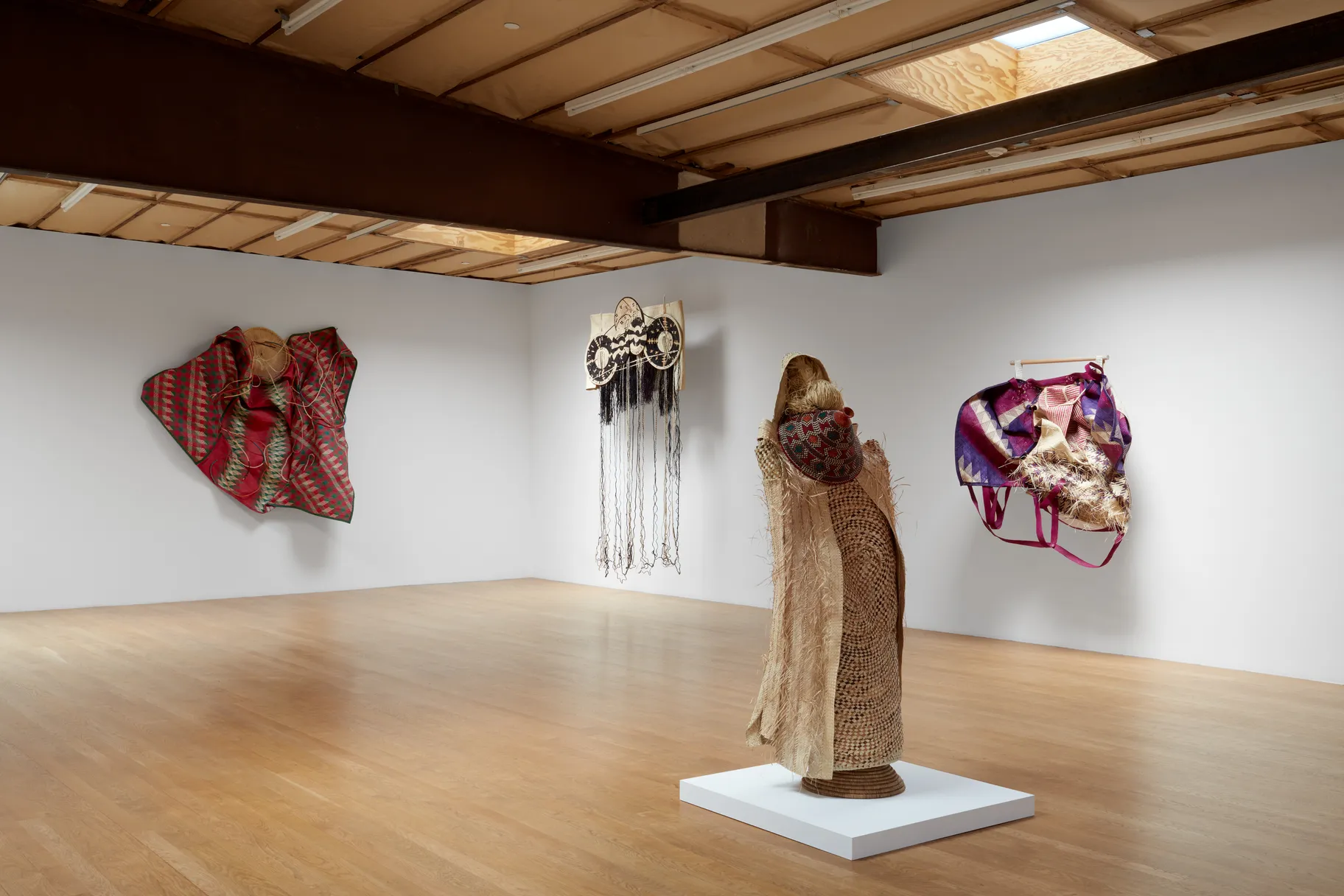At the Roberts Projects Gallery on La Brea Avenue, Suchitra Mattai creates beautifully intricate tapestries, woven out of women’s saris, a traditional garment from India. As an Indo-Caribbean artist, Mattai’s works represent both her heritage and the broader South Asian diaspora. She calls this process “brown reclamation.”
“She uses saris in her work … as her primary weaving material. And some of these saris are actually even given to her from family members or friends, so they have this lived history to them,” says Lindsay Preston Zappas, founder and editor-in-chief of Contemporary Art Review Los Angeles.
Mattai also embroiders brown skin over white figures in found European tapestries, to add to her process of brown reclamation. She does this in a small piece titled “future perfect,” showing a brown-skinned woman with a black pearl halo who reads a book about the future.
“This piece really celebrates women, celebrates women of color, and the role that they’ve played across history and culture. And then that word, ‘future’ … it’s looking ahead, like, ‘Where are we going? What is the work that still needs to be done?’” Zappas says.
Meanwhile, Ugandan artist Acaye Kerunen is making her first solo debut in the U.S. at the Blum & Poe gallery in the Arts District. Her abstract pieces are made from traditional materials, like banana fiber, palm leaf, and raffia.

Acaye Kerunen’s exhibition is called “A Ni Ee,” which means “I am here.” Photo by Evan Walsh, courtesy of Acaye Kerunen and Blum & Poe.
To create these intricate works that celebrate Ugandan women, Kerunen commissions mostly women who have mastered the art of crafting with banana fiber and other materials. Then, she combines these works into a collage that forms her sculptures and wall works.
“This production of her work is a very social practice. It supports the economy, and she’s really interested in elevating women’s labor as well,” Zappas says.
Both Suchitra Mattai’s work at Roberts Projects and Acaye Kerunen’s exhibition at Blum & Poe are currently showing until August. This Saturday, the Roberts Projects gallery is also hosting a panel discussion on the transgressive materiality of Mattai’s work.
